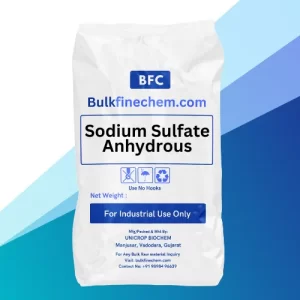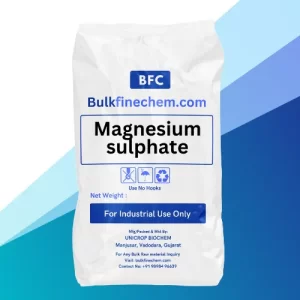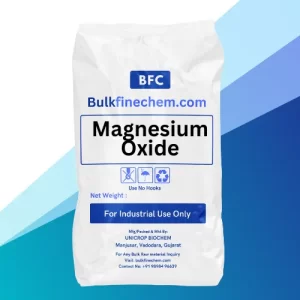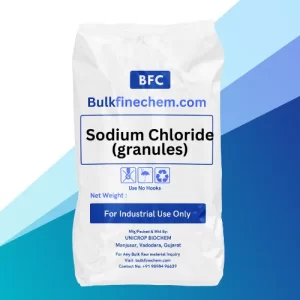Sodium Chloride (Pure)
Sodium chloride, commonly known as salt, is a fundamental compound with a 1:1 ratio of sodium and chloride ions. It plays a vital role in multiple domains. In seawater, it’s responsible for ocean salinity, affecting marine ecosystems and currents. As table salt, it enhances food flavor and extends shelf life by preserving various products. On an industrial scale, sodium chloride serves as a valuable resource for chemical syntheses. Furthermore, its use as a de-icing agent enhances road safety during freezing weather. Sodium chloride is not only a staple condiment but also a versatile substance essential to natural and industrial processes alike.
Application of Sodium Chloride (Pure)
Sodium Chloride (Pure) commonly known as salt (although sea salt also contains other chemical salts), is an ionic compound with the chemical formula NaCl, representing a 1:1 ratio of sodium and chloride ions. Sodium chloride is the salt most responsible for the salinity of seawater and of the extracellular fluid of many multicellular organisms. In its edible form, salt (also known as table salt) is commonly used as a condiment and food preservative.
Mechanism of Action
- sodium chloride primarily functions as the salt responsible for the salinity.
- When NaCl dissolves in water, it dissociates into sodium (Na+) and chloride (Cl-) ions.
- Sodium and chloride ions are essential for nerve function, muscle contractions, and maintaining extracellular fluid balance.
Benefits of Sodium Chloride (Pure)</h2.
-
- In culinary applications, sodium chloride enhances the taste and palatability of food, making it a staple condiment worldwide.
- As a food preservative, sodium chloride contributes to food safety by extending the shelf life of various products and inhibiting the growth of spoilage microorganisms.
It serves as a versatile resource in industrial processes, providing key chemical components for the manufacture of various chemicals and materials.





